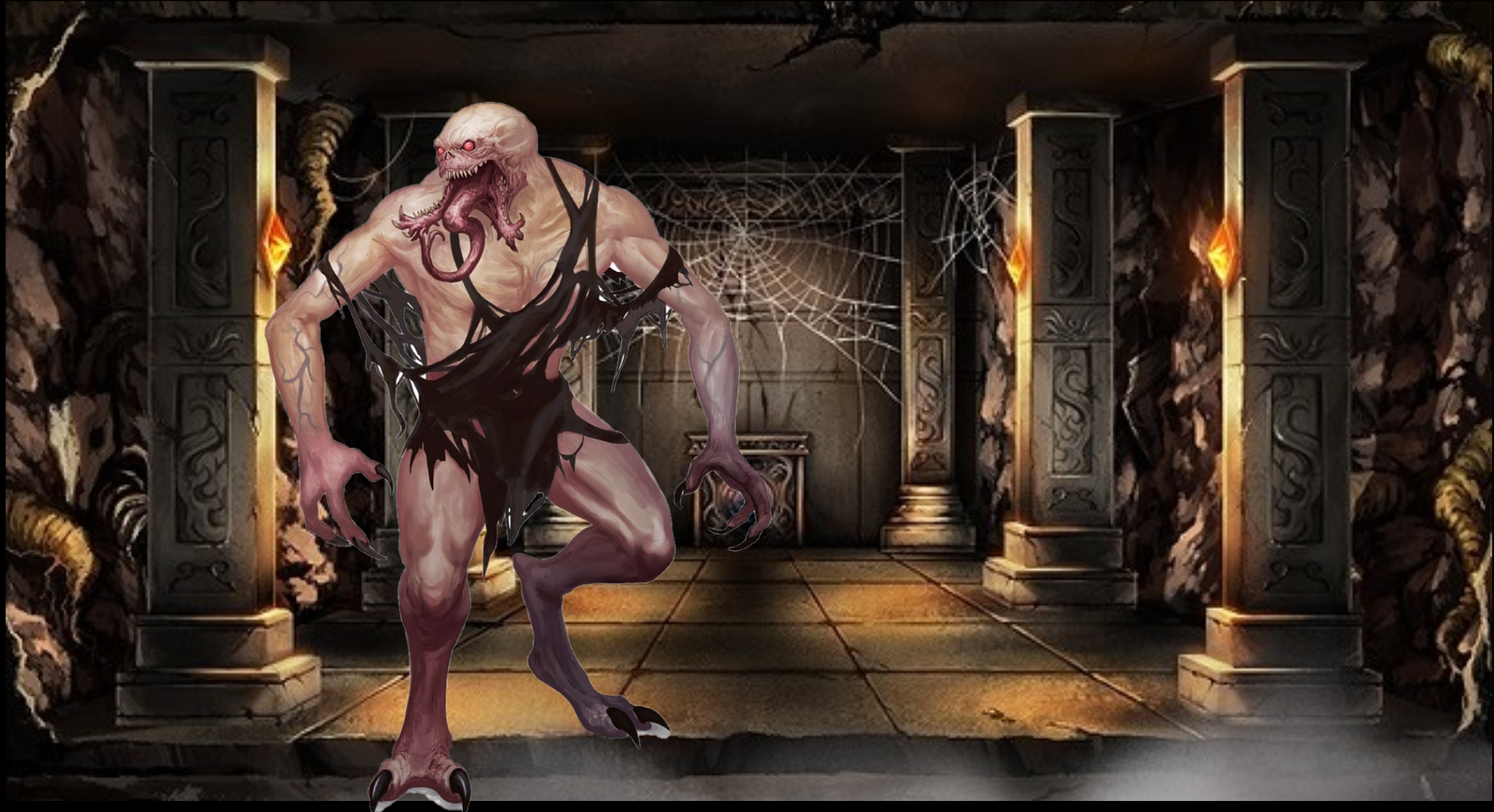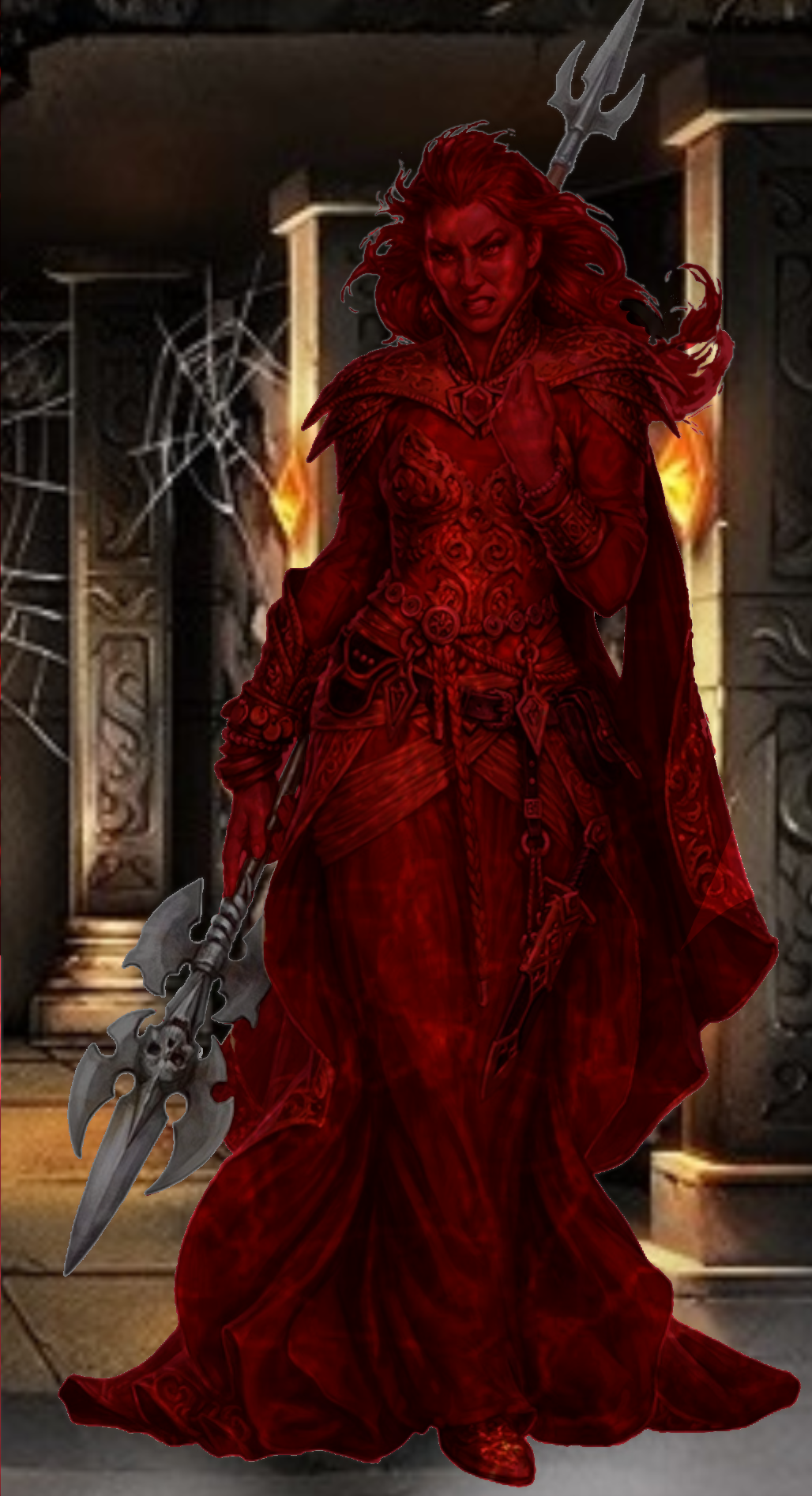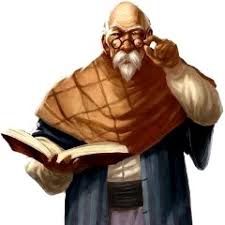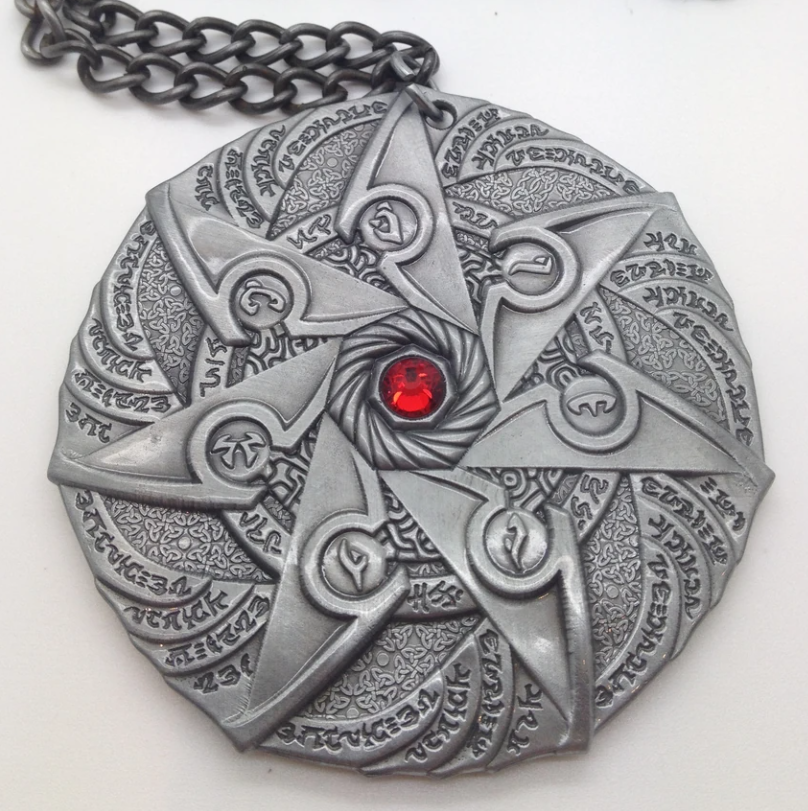Thassilon
A long lost empire in nowadays Varisia
The The Sandpoint sentinels have uncovered various truths about the ancient Empire of Thassilon. This is what they have uncovered.
A conversation between Jinx and Brodert Quink on the ancient nations of Thassilon.
Originally written by Storyarcher at ROTRL_Wiki
Show spoiler"Where to begin..." the old man took the lenses from their perch on his nose and set to fastiduously cleaning them, his earlier distraction having eased a bit with the prospect of a willing audience..
"So much about ancient Thassilon is unknown or is merely conjecture at this point. For all their ruins dot this land, little is known for certain about the mighty empire upon who's bones all of Varisia is built. Our ignorance is, of course, fostered in large part by Earthfall (a meteor collission that had cataclysmic impact) and its aftermath... when an empire is collapsing in fire and blood few have the good sense to keep detailed records for future scholars like myself." There is a twinkle in his eye as he replaces his glasses which gives you the impression he is speaking only half in jest. "We do know that the empire collapsed at least seven millenia ago though I personally suspect it was closer to ten. And we know something about its rulership - the Runelords as they were known and their 'seven virtues of rule', rumored to have been handed down to them by some greater benefactor..." he gestures at the stone tablet on the table with its elaborate seven-pointed star before listing them from memory, "Generosity, Love, Humility, Temperance, Gratitude, Compassion and Dilligence... whether each of the seven Runelords gravitated towards those virtues by choice or had the virtues were assigned to them after the fact is unclear, but what is clear is that over time the runelords grew in power and wealth. Oddly enough there is evidence that there was warring among the Runelords so if they were actually as virtuous as they declared themselves is debatable. Sitting up, the old man reached to pour himself some more tea, meticulous as he measured out a dollop of honey to stir into the steaming cup. Aside of ruling vast lands the runelords were also accomplished wizards. The Thassilonians had an odd approach to magic, or perhaps magic behaved differently those many thousands of years ago. They defined magic by application, not by origin as we might.This approach seemed to allow for precise specialization. Those traditions were defined by the Runelords who held to no such limitations, but rather allowed their individual natures and particular interests to drive their research... much less was known of magic in those times, much less and in some ways a great deal more..." he trails off for a second, his eyes taking on a faraway look as he absently sipped at his tea... musing... before stirring himself with a start and continuing. "Now, classification of magic this isn't something widely discussed outside of magical academies - where such history is deemed both necessarily pertinent and potentially embarassing - but supposedly it aligns in thusly: Conjuration magic, attributed to Krune, the Runelord of Dilligence in the realm of Haruka. Enchantment magic, attributed to Sorshen, the Runelord of Chastity in the realm of Eurythnia. Transmutation magic is attributed to Karzoug, the Runelord of Charity in the realm of Shalast. Necromancy, interestingly enough, is attributed to the Zutha, Runelord of Temperance in the realm of Gastash. Illusion is given to Xanderghul, the Runelord of Humilty in the realm of Cyrusian. Abjuration magic was attributed to Belimarius, the Runelord of Generosity in the realm of Edasseril. Evocation magic was attributed to Alaznist, the Runelord of Kindness who ruled the realm of Bakrakhan. "Conflicting texts speak of Divination magic as an additional classification of magic. It appears to have been a lone school not attributed to a particular virtue, nor to any Runelords... there are theories that such magic was suppressed at the time, perhaps by the mysterious patron the Runelords were beholden to, perhaps by the forgotten Goddess Lissala who saw true knowledge as the only real power... mayhap it simply wasn't considered a serious pursuit or each of the Runelords pursued it equally... I fear that may forever remain unclear" Brodert took another sip of his tea, musing... "Now we know something of the Runelords themselves but not much. The Runelord of Kindness - Alaznist - ruled the very land upon which we sit, once part of a nation known as Bak-ra-khan. Most of it perished beneath the waves - we are in fact just on what would have been its eastern edge. The Old Light must have been build by her or her predecessors. Most scholars believe it to be an old lighthouse but I strongly suspect that it must have been a weapon of some kind. Collegues in Magnimar and elsewhere have scoffed, but I believe it used to be much, much taller, a defensive weapon along the eastern border which served as a primary line of defense against Shalast to the east, capable of harnessing great energies and projecting them at range!" The wizened Sage's grin breaks, his pleasure evident, before continuing on. "Shalast, incidentally, was the domain of Karzoug, and whether the two nations were constantly at war or instead suffered a long series of seperate wars in succession is another debated point, but there was no love lost between the two, of that you can be certain." He finished his tea with a regretful sigh and sat back, setting the now empty cup aside. "Sad to say, that is as much as we know for certain about those two of the seven, and less if known about the others. Sorshen, the Runelord of Chastity, we know that she ruled a region south of here, beyond the Yondabakari River, a kingdom called Eurythnia, most of which has also been lost to the sea. There are suggestions that she played the two of them, Alanzist and Karzoug, against one another, and may have been the clandestine source of much of their strife... but that is really just conjecture. For the other runelords, we have names and precious few tidbits besides. Most of the rest of what I could tell you would be theories, not all of which I agree with."Brodert Quink
Jinx, ever the seeker of stories, turns his attention to the past. Though not a scholar by trade, he has long been fascinated by the lost empire of Thassilon. He knows much already, but knowledge is not a stagnant thing—it shifts, hidden in the folktales and whispers of the Varisian people.
His first stop is the home of Brodert Quink, Sandpoint’s resident sage. The Gnome has spoken with him many times before, but today, he hopes to learn more.
Brodert welcomes Jinx eagerly, ushering him inside for tea. The sage, ever eager to share his vast knowledge, launches into lengthy tales of his discoveries. Jinx listens attentively, careful with his words—never positioning himself as an equal, but as a student. He offers his own theories with tact, ensuring Brodert remains the authority. The Gnome endures the long-winded monologues, knowing that patience will be rewarded with knowledge.
Fabrax and the Cyphergate
His name is Fabrax Volso, a Cyphermage from Riddleport, a city notorious for its lawless docks and undercurrents of intrigue. Pirates, smugglers, and rogues of all kinds thrive there, but for scholars like Fabrax, the real draw is the Cyphergate—an enormous Thassilonian stone arch that looms over the harbor, etched with ancient runes whose secrets remain largely unknown.
Fabrax explains that the Cyphermages devote themselves to unraveling the mysteries of the Cyphergate, but their studies are constantly disrupted by the city’s criminal machinations. In fact, it’s those very dangers that have brought him to Sandpoint.
He carries a warning: pirates have begun specifically targeting scholars and allies of the Cyphermages. Any who approach Riddleport by sea do so at great risk. Though he doubts Brodert Quink—Sandpoint’s resident Thassilonian expert—has plans to visit Riddleport, he still feels it necessary to deliver the message.
Jinx listens intently, his mind already turning over the implications. When Fabrax mentions that he intends to visit Brodert personally, Jinx makes a decision—he will join them later. If there is knowledge to be shared, he will be there to hear it.The many Thassilonian Ruins
Later that day Jinx and Brodert summarize among themselves what they have learned yesterday from Fabrax. One part of their discussion was regarding the resolute nature of most Thassilonian monuments and structures. The Cyphergate in Riddleport, The Skull's Crossing dam close to Turtleback Ferry and the Storval Stairs show hardly any sign of erosion or decay. This is remarkable since their creation must have occured between 10.000 and 5.000 years ago. The leading theory is that the intrinsic runes carved into the surviving structures have preserved them. "The old light" has not withstood the test of time. Perhaps engravings of runes can be found among the rubble. The site has mostly been picked clean but with newfound inspiration perhaps Jinx and the old Sage can recover something of value to study.
Jinx carefully guides the elderly Brodert to the ruins of The Old Light, the towering remnants of an age long past. The sea breeze carries the scent of salt and damp stone as they step among the weathered debris. Brodert adjusts his spectacles, his sharp eyes scanning the loose stones with the meticulous patience of a man who has spent a lifetime unraveling history’s secrets.The Old Light
Hours pass in ink-stained diligence until, at last, a breakthrough—a single rune matches a lesser-known Thassilonian script recorded in Janderhoff. Though only a fragment of a greater mystery, it is enough to rekindle their resolve. As candlelight flickers over scattered notes and weary hands, Brodert leans back with a satisfied sigh, declaring, "This is how true knowledge is uncovered—one painstaking step at a time." Jinx, though exhausted, feels the thrill of discovery surge through him. Today, they have chipped away at history’s veil, revealing just a sliver of what once was.
Some of the runes they uncover hint at something far more potent than the usual protective enchantments found in most Thassilonian ruins. These symbols do not ward against the elements or reinforce structure—they suggest the containment and harnessing of raw energy. Jinx and Brodert pore over their notes, cross-referencing each rune with historical records, and the implications grow more compelling. If their interpretation is correct, this could lend significant credence to their long-standing theory: The Old Light was not merely a lighthouse or a crumbled monument of a bygone era, but something far more formidable.
A weapon.
The notion sends a shiver down Jinx’s spine as he traces the faint etchings with careful fingers. Could this towering ruin have once channeled devastating power, unleashed in the days of ancient Thassilon? Brodert mutters excitedly, pulling another tome from his ever-growing pile, his mind alight with the possibilities. If they could uncover more evidence—perhaps a direct reference in a surviving text or another section of carved stone—it could change everything scholars believed about The Old Light. For now, though, all they have is a tantalizing glimpse into a past where this ruin was not simply a relic—but a remnant of destruction itself.The Rasp
After a quick stroll to his hut to resupply on his ample ginger, Jinx can once again be found at Brodert's House. Brodert and Jinx continue your delve into the secrets of Ancient Thassilon. They decide that discerning The Old Light's exact location within the various kingdoms of Thassilon may reveal hints of the structure's original purose. This requires a visit to 'The way North'.
As with several other buildings in the vicinity, this one‑story structure was recently renovated after the Sandpoint Fire. Previously a stable, the building has been converted by its new owner, an aged but spry Gnome named Veznutt Parooh, into a cramped and cluttered library housing his tremendous collection of maps and nautical charts. Maps of local regions, from the immediate vicinity up to the whole of Varisia and the Storval Plateau, can be purchased from him for various prices.
Veznutt adores treasure maps, and sells what he calls “novelty treasure maps” as art objects. He’s the cartographer for all of these maps and is completely up front and honest about them being false—they’re intended only for entertainment value, and any shenanigans a customer might get up to by passing one off on a friend as a prank is really none of Veznutt’s business. When not here crafting copies of old maps, Veznutt can usually be found arguing over history with his best friend Ilsoari at Turandarok.
While discussing the map Brodert falls into a lengthy lecture about the political structures of Thassilon and it's various kingdoms. A treasure trove of information if one can follow it and mentally sketch the borders and lines of succession. At the end of the day both gnomes can conclude that they have learned much.Sinspawn
Rabie settled beside Jinx, peering at the corpse with a curious glint in his violet eyes. He had read about Demons before, but something about this creature unsettled him. “I don’t think it’s a demon,” he mused aloud.
“That’s because it’s not,” Jinx replied, his voice carrying the weight of revelation. “I think it’s a Sinspawn. They have ties to the ancient history of these lands—something about the Runelords, Thassilon’s old rulers. If I’m right, they represent one of the seven sins.”
Vannrik looked up from where he was applying a salve to his side, his expression darkening. “Do you think we’ll encounter one for each sin?”
The thought sat uncomfortably in his gut.Alaznist - Runelord of Wrath
Vannrik took point, leading the group into the open chamber.
At the center of the room stood a striking red marble statue of a woman—beautiful, yet terrifying in her monstrous fury. Her flowing robes and elaborate headdress of hooks and blades only accentuated her wrathful presence. In one hand, she clutched a massive tome, its cover adorned with a seven-pointed star. In the other, she held a gleaming metal-and-ivory ranseur.
A gaping hole in the western wall led back to the original smuggler’s tunnel. To the east, a hallway ascended gradually, disappearing into darkness. And to the north, another heavy stone door stood waiting.
Vannrik turned to his magically inclined companions. “Does that weapon appear to be magical?”
Jinx shook his head, though he found it difficult to tear his gaze from the magnificent weapon. He studied the statue from head to toe, the gears in his mind turning. “I think this is one of the Runelords, but I can’t be sure…”
He hesitated, reluctant to share his growing suspicion—that this was Alaznist, the last Runelord of Wrath. If he could compare the statue to a particular shard of pottery in Brodert Quink’s collection, he might be able to confirm it. But for now, it was only a theory.The settling and the horrors of the Thassilonians
Each chamber contained a single skeleton—deformed, twisted mockeries of humanity. One bore three brittle arms. Another’s skull had grown to an unnatural size. The third had an elongated ribcage stretching down to its pelvis, the remains of stunted leg bones scattered beneath its flattened torso.
Rabie recognises that these creatures were the subjects of vile fleshwarping experiments.
Shalelu’s expression twisted in revulsion. “The elves of the Mierani Forest were in these lands when the Thassilonians arrived. I’ve heard stories about the cruelty of men, but I always assumed they were exaggerated. This… this is horrible.”
A heavy silence fell over the group as they absorbed the implications of what they had uncovered.
Vannrik furrowed his brow, thinking aloud. “These ruins are older than Sandpoint, right?”
Rabie nodded. “Most likely from the time they built The Old Light.”
The Jadwiga’s frown deepened. “So they just happened to build the town right on top of them?” He had learned long ago not to believe in coincidences.
Rabie offered an explanation. “My people are usually nomadic. For years, we have traveled the land, but the ruins of Varisia often became resting places, places to make camp. The history of the land deserves reverence. Over time, some of those camps grew into settlements—Magnimar at the ruined bridge, Riddleport by the giant arch, and more. I doubt the original settlers of Sandpoint had any idea what lay beneath.”
Jinx couldn’t help himself. His passion for ancient history burned too brightly to remain silent. “These ruins must have been built between five and ten thousand years ago. The time of Thassilon is not recent history.” His excitement was evident in every word. Rabie glanced toward the stone door leading east. “I don’t think Skeletons can help us. Let’s continue.”Karzoug of Shalast
"What happens now?" Lyrie asked, voice uncertain, fear tugging at the edge of her composure. Jinx was already scanning the papers on the table, and his eyes lit up with recognition. He understood the script—the runes etched into the parchment were ancient Thassilonian . Thistletop, he realized, had been built atop the sunken head of a colossal statue, half-buried in the Varisian Gulf . The implications were immediate.
"You're a student of Thassilon ? This is very interesting," Jinx said, flipping through the research papers. He knew it would take time to glean her findings from these pages. There was a faster way. "Tell me, what did you find?"
The woman blinked at the question, momentarily surprised. But her uncertainty faded as she launched into familiar territory.
"This statue where we are right now was erected by a Runelord from long ago. A man by the name of Karzoug." She exhaled in relief—talking shop clearly came naturally. "He ruled over a country called Shalast. From what I've been able to gather, this is a border area. A couple of miles to the west, where Sandpoint is located..." She glanced at them knowingly. "I assume you are from Sandpoint ?"
The Sentinels nodded.
"It was the realm of a rival of his," she went on. "These lands lie on the border between their countries. This structure was a watchpost of some sort to keep eyes on his enemies. That's what I know of the structure." Her gaze drifted upward, toward the ceiling—toward the Goblin fortress above.Lyrie's findings
Cletus furrowed his brow. "Wait, first, clear something up for me. What is a Runelord?"
The woman gave Jinx a brief, puzzled look before turning to the tiefling. "I'm sorry. I thought you were better informed."
She inhaled, steadying herself before continuing. "Long, long ago—before the Earthfall cataclysm—the lands of Varisia and even beyond were part of an empire called Thassilon . Its rulers were called Runelords. They used a very..." She paused, searching for the word. "Ancient, antique kind of magic. They were destroyed, just as basically anything living on Golarion at the time." She glanced at the group. "That's a broad description. I don't know what kind of lecture you expect from me."
Cletus tried to piece it together. "So you tell me that there are these Runelords that lived a couple of centuries ago. And one of them had a capital underneath Sandpoint ?"
The woman shook her head. "No, Sandpoint lies at the border between two old Thassilonian kingdoms. From what I have been able to gather they were bitter rivals."
The tiefling sighed. "I had hoped for an explanation for why goblins would want to raid Sandpoint ."A poem for Runelord Karzoug
A level below, a stone door near the staircase hung open. The once-detailed carvings on its surface had been all but obliterated by time and vandalism—chisel gouges and hammer marks leaving only scattered remnants: fragments of gemstones, outlines of crowns. The floor sloped downward toward the west, and the defaced wall held traces of ancient inscriptions.
Jinx squinted at the text, eyes tracing the damaged lettering. He raised a hand. “Hold on, let me read this.”
"……..
For him
Hoards vast
My life
For Runelord Karzoug
My blood
For Xin-Shalast"
The word "Runelord" jumped out at him—one of the rare terms that surfaced in the few surviving records of ancient Thassilon. The rulers of Thassilonian realms had borne that title. And Xin-Shalast... it was thought to be a myth, a city of gold and silver hidden somewhere deep in the Kodar Mountains.
“How long ago did those Runelords live? A hundred years, two hundred?” Cletus asked.
Jinx shook his head gravely. “Their empire ended with Earthfall, around ten thousand years ago.”
The room beyond was supported by two pillars. In many places the stone walls, floor, and ceiling were caked with ancient grime and soot. Alcoves in the north and south walls contained partially damaged statues of a man in robes clutching a book and a glaive. The entire room was canted toward the west, and whatever ancient upheaval caused the complex to tilt knocked the statues from their bases so that now they lean against the western walls of their alcoves.
Cletus eyed the walls uneasily, noting the long, ragged claw marks gouged into the stone. “I guess someone didn’t like this.” He stepped closer to the more intact statue. “This is the Runelord then?”The Runewell
...draws the anger of wrathful souls to itself, when a death occurs within its sphere. It is strange - ancient and powerful, churning, bubbling, glowing orange, but freezing to the touch. After the mad woodcarver's parade of murder and the fire that was my own work, it glows like a furnace. Erylium showed me how a blood sacrifice can summon forth a twisted monstrous soldier from its depths, born of the sin of wrath. Lamashtu's blessing must truly be on this place. But the Quasit also warns me not to overtax it, for fear of draining it entirely. With every soldier I draw forth, the runewell's light dims...The Sihedron Rune
Through his studies he could easily identify the seven pointed star. The Sihedron Rune— it represented Thassilon’s seven virtues of rule, and the seven schools of magic in their archaic view on the arcane. It shimmered faintly with enchantments: one to toughen flesh, another to preserve the dead with Peaceful Rest.
Type
Geopolitical, Empire







Comments